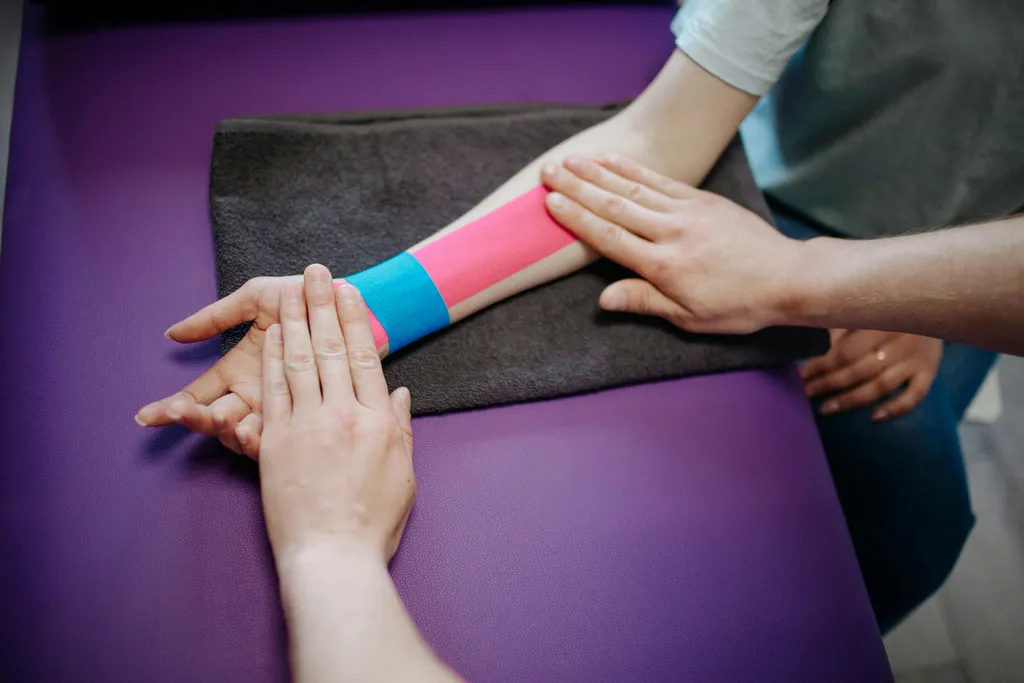Muscle Adhesions Explained: Causes, Effects, and Solutions

CMO @ Fastic

With Fastic, millions of people have achieved their desired weight, overcome disease and regained their quality of life.
Have you ever felt a persistent tightness or discomfort in your muscles that just won't go away, no matter how much you stretch or rest? You might be dealing with muscle adhesions; a common yet often misunderstood issue that can affect anyone, from athletes to desk workers.
Muscle adhesions occur when muscle fibers or connective tissues stick together, limiting movement and causing pain. But what exactly causes these adhesions, and how do they impact your body? More importantly, what can you do to get rid of them and prevent them from coming back?
In this article, we’ll break down everything you need to know about muscle adhesions. From understanding how adhesion proteins work to exploring the types, symptoms, and effective treatment options. Whether you are looking to relieve discomfort or simply want to learn more about how your muscles function, this guide and the Fastic App can help you take control of your muscle health.
What is Muscle Adhesion and How Does Adhesion Work?
If you’ve ever felt a stubborn tightness or stiffness in your muscles that won't go away, you might be dealing with muscle adhesion.
Definition of Muscle Adhesion
Muscle adhesion is a condition where layers of muscle tissue stick together due to injury, overuse, or inflammation. Think of it like glue binding two sheets of paper together. Normally, your muscles and connective tissues (e.g., fascia) should move smoothly over each other, allowing easy movement. But when adhesions form, they restrict movement, cause stiffness, and sometimes lead to pain.
The Mechanism of Adhesion in Muscles
Micro-Tears & Repair
When muscles experience small injuries, the body sends collagen fibers to repair them. But instead of neatly organizing, these fibers can clump together, forming adhesions.
Scar Tissue Formation
Research shows that when healing occurs improperly, thick, fibrous scar tissue develops, preventing muscles from moving freely.
Restricted Movement & Pain
Since adhesions limit how muscles and fascia glide, this leads to reduced flexibility, stiffness, and sometimes chronic pain.
How do Muscle Adhesions Form?
Muscle adhesions develop due to several reasons, including:
Repetitive Movements: Activities like running, lifting weights, or even sitting for long periods can stress muscles and cause micro-tears.
Injuries: Strains, sprains, or trauma can trigger scar tissue formation, leading to adhesions.
Inflammation: When muscles experience stress, the body sends inflammatory cells to repair the damage, which sometimes results in excessive scar tissue.
Poor Posture: Sitting or standing in awkward positions for extended periods can lead to tight, stuck tissues.
The Role of Adhesion Proteins
What Are Adhesion Proteins?
Research shows adhesion proteins are specialized molecules that help cells stick together and interact with their surroundings. They are found on the surface of cells and within the extracellular matrix, acting like biological glue that holds tissues togethers. These proteins are essential for maintaining the integrity of muscle fibers, ensuring that they stay connected and function smoothly.
How Do Adhesion Proteins Facilitate Muscle Function?
Adhesion proteins contribute to muscle health and performance in several key ways:
Maintaining muscle structure
Facilitating cell communication
Supporting muscle repair and growth
Preventing muscle degeneration.
Why is Cell Adhesion Important?
Without strong cell adhesion, muscle cells would be unable to function properly, leading to weakness, poor coordination, and increased injury risk. By ensuring that muscle fibers remain structurally connected and communicative, adhesion proteins help maintain strength, flexibility, and overall muscle health.

Types of Adhesion
Understanding the different types of adhesions helps in identifying their causes and finding appropriate treatments. Adhesions can be broadly classified based on their nature and effects on the body.
Classification of Muscle Adhesions
Muscle adhesions can be categorized into two main types:
Physiological Adhesions
Pathological Adhesions
Each type plays a different role in muscle function and health. Let's take a closer look at how they differ.
Physiological Adhesions
Physiological adhesions are beneficial and occur naturally in the body. They contribute to muscle stability and proper movement. Some key features include:
Supportive role
Temporary in nature
Controlled by the body.
Pathological Adhesions
Pathological adhesions, on the other hand, are problematic and can lead to dysfunction. These adhesions result from injury, chronic inflammation, or excessive scar tissue formation. Characteristics of pathological adhesions include:
Restricting movement
Formed after trauma or surgery
Can lead to chronic pain.
Symptoms of Muscle Adhesions
What Do Muscle Adhesions Feel Like?
The sensation can vary, but common descriptions include:
Persistent Tightness: A feeling of stiffness that does not go away with normal stretching or rest.
Dull or Aching Pain: Especially in areas of previous injury or overuse.
Restricted Range of Motion: Difficulty moving a muscle freely without discomfort.
Localized Tenderness: A specific spot that feels sore or sensitive to touch.
A “Knotted” Sensation: Some people describe adhesions as feeling like small lumps or tight bands within the muscle.
Identifying Pain and Discomfort Associated with Adhesions
Muscle adhesions can present differently depending on their severity and location. Here are some key signs to help identity them:
Pain during movement
Pain that persists even at rest
Inconsistent pain levels
Sensitivity to pressure
Muscle weakness or fatigue.
Treating and Preventing Muscle Adhesions
Understanding how to treat and prevent adhesions can help maintain healthy muscles and prevent future issues. Let’s explore effective techniques for relief and recovery.
How to Get Rid of Adhesions in Muscles
Breaking down muscle adhesions requires targeted treatments that restore normal tissue movement and function. Here are some of the most effective methods:
Massage therapy
Stretching and mobility exercises
Foam rolling (self-myofascial release)
Physical therapy
Heat therapy
Hydration and nutrition (check Fastic articles for more tips)
Preventing Muscle Adhesions
While treatment is essential, prevention is even better. Here’s how to minimize the risk of muscle adhesions:
Stay Active: Regular movement prevents tissues from becoming stiff and forming adhesions.
Maintain Good Posture: Poor posture can lead to muscle imbalances, increasing the likelihood of adhesions.
Warm Up and Cool Down: Preparing muscles before exercise and stretching afterwards helps maintain flexibility.
Use Proper Technique: Ensuring correct form in activities like weightlifting and running reduces unnecessary strain on muscles.
Listen to Your Body: Addressing minor discomfort early prevents developing into severe adhesions.
With Fastic, millions of people have achieved their desired weight, overcome disease and regained their quality of life.
Take the Quiz